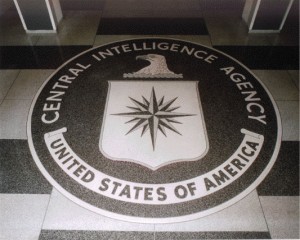Reprinted from Consortium News
The Senate Intelligence Committee's 500-page "executive summary" of the 6,700-page full report on the CIA's "enhanced interrogation" program has completely shattered the official myth that the torture of al-Qaeda detainees -- which the CIA calls "enhanced interrogation techniques" -- somehow helped to thwart further terrorist attacks.
After examining six million pages of official CIA documents, the committee staff refuted every one of the CIA's claims that its torture program generated the crucial intelligence that led to the disruption of plots and the apprehension of terrorist suspects.
But the committee report leaves little doubt that the CIA was not simply mistaken about the issues involved; it had for years been systematically lying about virtually every aspect of the torture program.
The report revealed that senior CIA officials decided in 2005 to destroy the videotapes of interrogations carried out under the program when the idea of an independent investigation of the program was first broached. The destruction was clearly carried out in order to ensure that the evidence could not be used to prosecute those responsible.
The report's complete demolition of the rationale for the torture program raises an obvious question: if the CIA knew that it was not really getting information that would help prevent terrorist attacks, why did the program continue until 2008? Why not cut the agency's losses years earlier?
The answer to that question lies not in normal human reasoning but in the fundamental logic of all bureaucratic organizations. By their nature, bureaucracies seek to expand and defend their power, prominence and resources, and the CIA is no exception. The agency's detention and torture program is a perfect example of how national security institutions pursue their organizational interests at the expense of even the most obvious interests of the nation they are supposed to serve.
What created the opportunity for the program, as CIA Director George Tenet recalled later, was the fact that Pakistani counter-terrorism officials rounded up more than two dozen al-Qaeda operatives simultaneously in March 2002. This quickly led to the capture of Abu Zubaydah, the highest-ranking al-Qaeda operative at that time -- although his actual status in the hierarchy was apparently not very high.
The prospect of extracting crucial intelligence from Zubaydah and other "high-value detainees" prompted Tenet and his associates to begin developing the idea for a whole new program that would go well beyond existing legal and ethical boundaries for interrogation. The CIA detention and interrogation program, based on hitherto forbidden abuses of detainees, was born.
The powerful appeal of such a program to the CIA's counter-terrorism officials lay in the huge enlargement of the CIA role in U.S. national security policy. The currency by which senior CIA officials measure the agency's bureaucratic power is what they referred to as their "authorities" -- their freedom to undertake various activities.
By taking on a new role in detention and interrogation of terrorist suspects, the CIA clearly stood to make unprecedented gains in this kind of power. Tenet hints in his memoirs that: "We were asking for and we would be given as many authorities as the CIA ever had." The most important such "authority," of course, was the legal assurance that what had previously been considered illegal and "torture" would now be redefined as something else.
What was arguably equally or even more important to senior CIA officials working on terrorism was the opportunity to occupy center stage in what appeared to be the most compelling drama of the post 9/11 era. CIA officials certainly imagined themselves as extracting "actionable intelligence" from high-level detainees with their tough new approach to interrogation and being given credit for preventing the new attacks that they were certain were being hatched.
It was such dreams of basking in the glory of being responsible for saving the country from future terrorist attacks that gave the CIA torture project such bureaucratic momentum.
What animates national security bureaucracies to push for major new programs is the desperate need to be important -- to be a major "player" in big issue of the era. James Risen recounts in his new book, Pay Any Price, how the CIA's Directorate of Science swallowed a fraudulent claim by a shady contractor in 2003 that they had a digital technology that could decode al-Qaeda terrorism instructions embedded in Al-Jazeera broadcasts -- all because the directorate was afraid it had lost its importance in the previous several years.
The same need prompted the CIA to sign a deal with two contract psychologists who pushed an equally fraudulent theory of interrogation they called "learned helplessness," which held that the way to get prisoners to spill all their secrets is to break their will.
Just as the Directorate of Science was taken in because of its dreams of a new status, the CIA bought into the false interrogation theory because it played into the heroic fantasy of breaking the will of the evil-doers and stopping the terrorists from striking again. It may not be accidental that the notion that torture would work on the bad guys surfaced in the wake of the enormously popular TV series "24" in which Jack Bauer showed millions of Americans how it could be done -- albeit without the elaborate machinery of abuse that the CIA would create.
(Note: You can view every article as one long page if you sign up as an Advocate Member, or higher).






